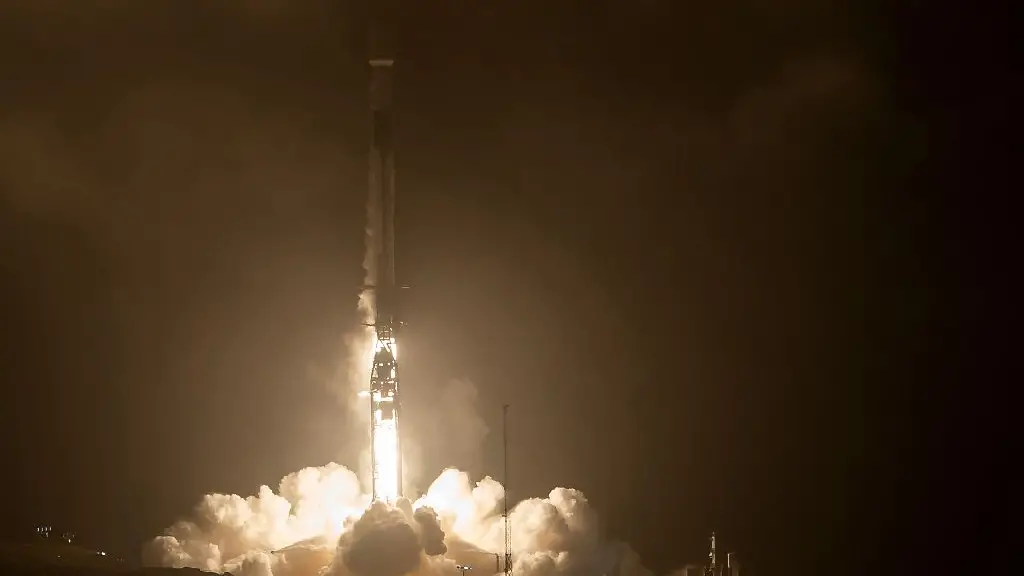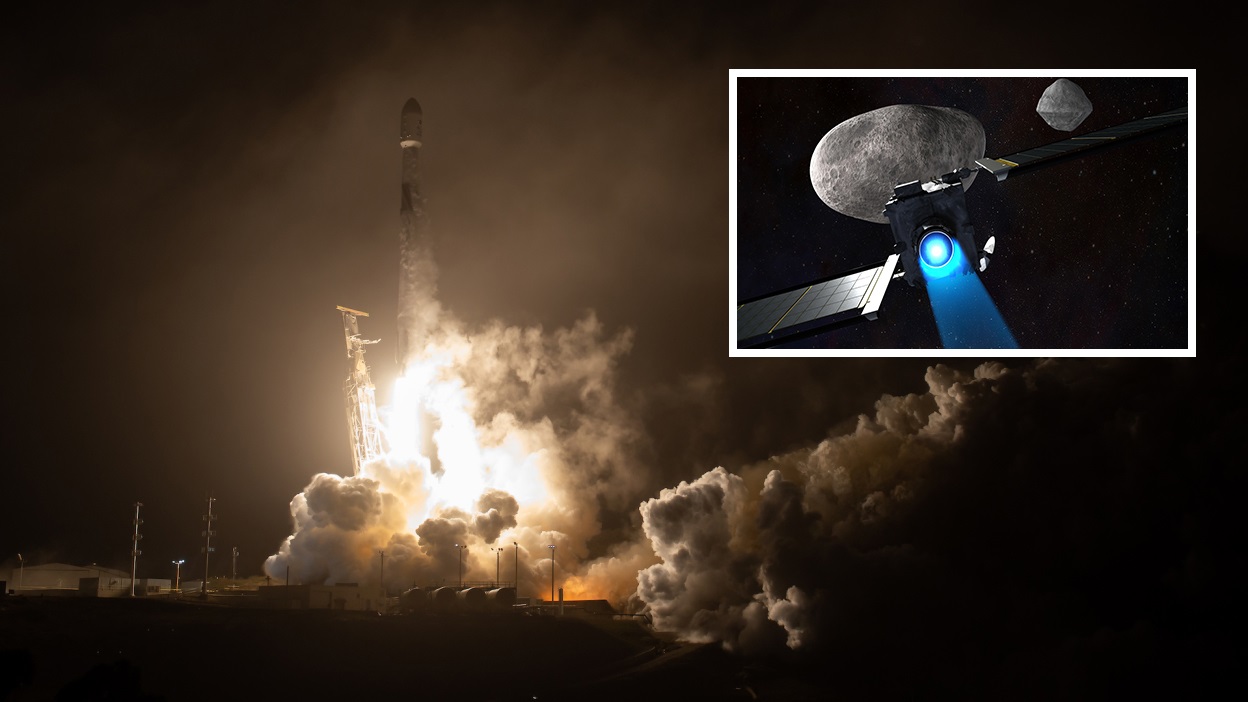SpaceX sent a tiny NASA spacecraft into orbit early Wednesday, aiming for a faraway asteroid and setting up a 15,000 mph head-on collision next September to test the viability of pushing a dangerous matter off course long before it might smash into Earth.
The $330 million Double Asteroid Redirection Test, or DART, the first test flight in a NASA planetary defence strategy, “will be historic,” according to Tom Statler, NASA Headquarters mission programme scientist. “Humanity will alter the motion of a natural celestial body in space for the first time.”
The DART mission, aboard a SpaceX Falcon 9 rocket, lifted off from Vandenberg Space Force Base northwest of Los Angeles at 10:21 p.m. PST Tuesday (1:21 a.m. EST Wednesday), lighting up the deep midnight sky with 1.7 million pounds of thrust.
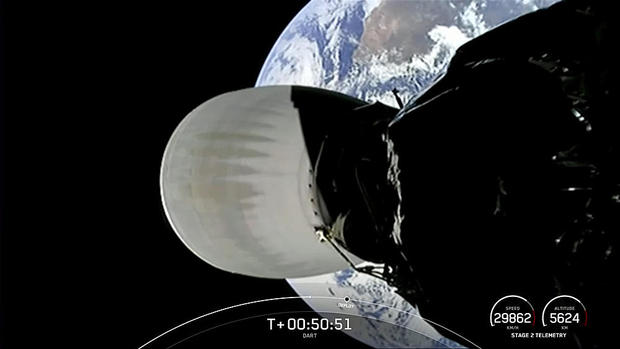
A breathtaking perspective from a camera mounted on the Falcon 9 rocket’s subsequent stage showing Earth retreating behind the scenes as DART heads into profound space, on course for a rapid crash with a little space rock one year from now to test a promising method that may one day keep an undermining body from affecting Earth.
The Falcon 9 arced to the south over the Pacific Ocean, effortlessly powering out of the dense lower atmosphere and into space. The DART spacecraft was freed to fly on its own 55 minutes after liftoff, after two firings of the rocket’s second stage engine — with magnificent on-board camera pictures of Earth receding in the backdrop.
This was SpaceX’s 26th flight of the year, the 129th Falcon 9 mission altogether, and the 18th from California. As is customary for SpaceX, the first stage rocket piloted itself to a precise landing on an offshore droneship, marking the company’s 95th successful recovery.
But the DART’s mission was only getting started. The spacecraft will take 10 months to reach its destination, a 525-foot-wide asteroid called Dimorphos that circles a half-mile-wide parent body called Didymos. Neither presents a threat to Earth prior to or after the DART encounter.
The double-asteroid system, on the other hand, is an appealing target for DART because the impact can be monitored more accurately from Earth by precisely monitoring how the moonlet orbital period changes around Didymos as a result of the collision.
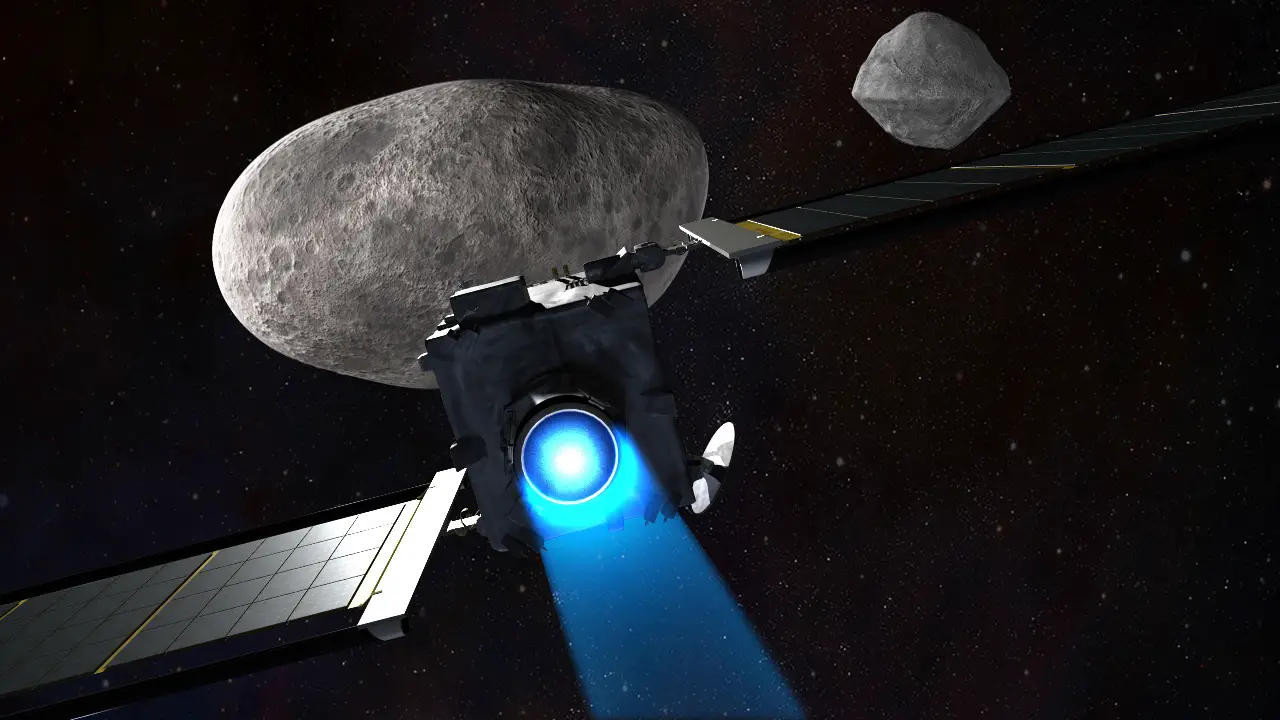
An artist’s impression of the DART probe closing in on Dimorphos, a small moonlet orbiting a half-mile-wide asteroid known as Didymos. A small Italian hitchhiker satellite that will monitor DART’s high-speed impact next September is visible at lower right.
And what a collision it will be.
The 1,210-pound DART spacecraft is anticipated to smash into Dimorphos at 15,000 mph, disintegrating on impact as it gouges out a new crater and slowing the body by a microscopic fraction of an inch per second.
In the closing phases of its kamikaze approach, the probe is designed to broadcast back high-resolution photos once per second, reaching the remaining 1,000 kilometres in just 4 minutes.
LICIACube, a small Italian hitchhiker spacecraft launched from DART 10 days before impact, will attempt to picture the collision and debris ejected out into space. Didymos and Dimorphos will be around 6.8 million miles from Earth at the time of impact.
Unlike Hollywood scenarios such as “Armageddon” and “Deep Impact,” which envisioned piloted planes carrying nuclear weapons deflecting or destroying their targets, DART’s mission is considerably simpler and less deadly.
While nuclear weapons may be used as a last resort in some future Armageddon-style event, deflection rather than destruction would still be the aim.
“You just do not want to blow it up because that does not affect the path of all the stuff,” NASA’s “planetary defence” officer Lindley Johnson told CBS News. “It is still coming at you, but instead of a rifle ball, it is buckshot.”
“All you want to do is adjust the speed at which everything is all going by a fraction of a second.” This will cause the asteroid’s location and orbit to fluctuate over time.”
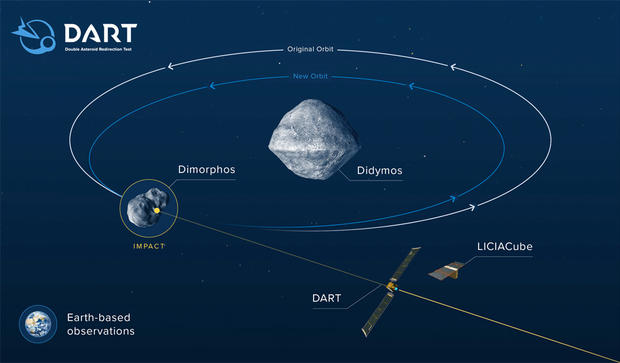
If DART’s high-speed impact succeeds as predicted, Dimorphos’ orbital velocity will alter significantly, cutting a few minutes off the present time of 11 hours and 55 minutes to make one journey around Didymos. The minimal time difference for mission success is 73 seconds.
“Now, it is a very modest shift, but it may be all that is required to divert an asteroid on a collision path with Earth if we ever need to do that, assuming we find that asteroid early enough and have enough lead time,” Statler explained.
Early detection is essential because the farther away a dangerous body is when trying a deflection, the less power is necessary to shove it off course. DART is NASA’s first “planetary defence mission,” and its primary goal is to test the “kinetic impact” technique.
“DART is simply the first step toward perhaps preventing asteroids from impacting the Earth in the future,” Chabot explained.
Astronomers estimate that there are around 25,000 near-Earth asteroids that are 500 feet or greater in size.
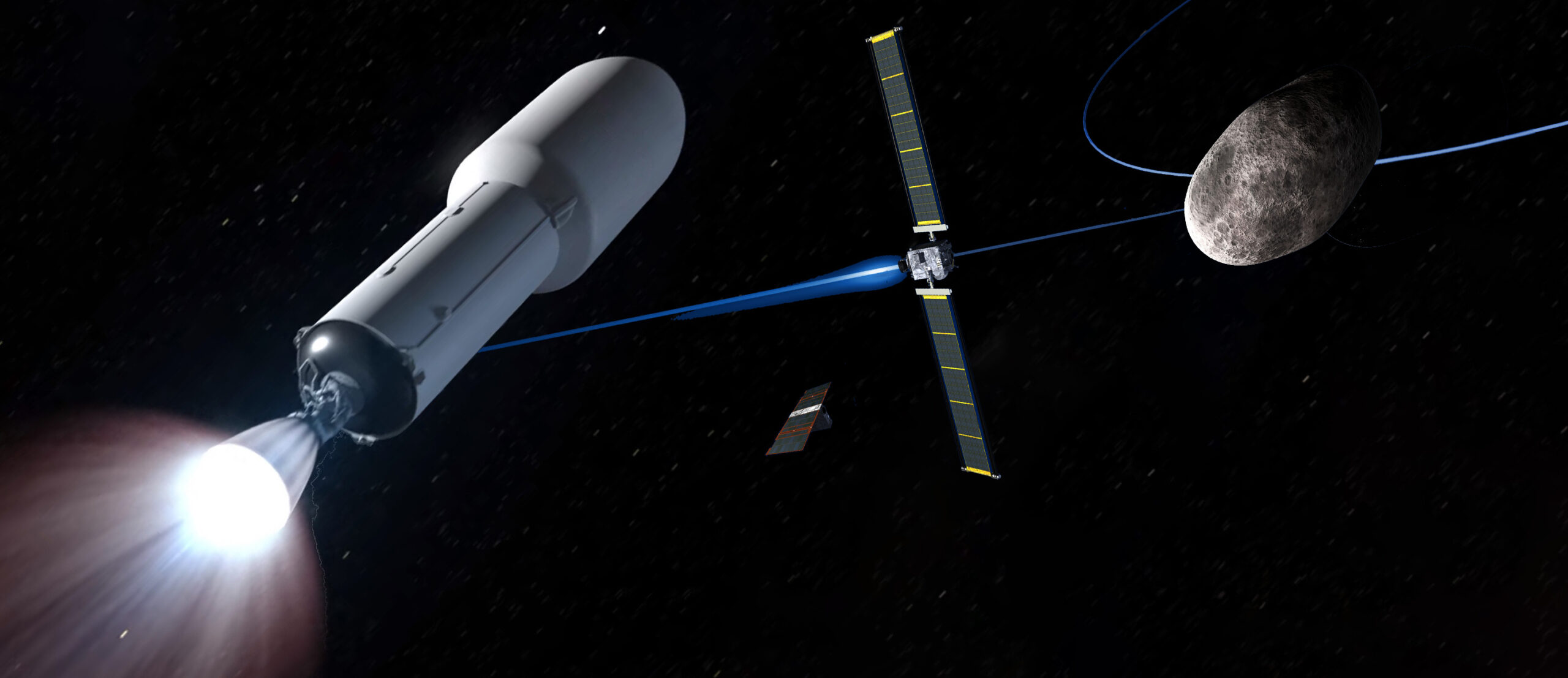
To put things in perspective, the body that blew out Meteor Crater in Arizona was roughly 150 feet wide, yet the meteor that exploded above Chelyabinsk, Russia, in 2013, injuring over 1,600 people and leaving an estimated $30 million in damage, was just 60 feet across.
“Right now, we are primarily concerned about objects that are a few hundred metres (wide), and that is because we have only detected approximately half of this population,” said Nancy Chabot, APL’s chief planetary scientist. “As a result, we do not know where all of them are.”
“So, in addition to identifying these asteroids, determining where they are, following them, and ensuring our safety, we want to be prepared to perhaps prevent them from impacting the Earth in the future.”
To put a “few hundred metres” into context, Chabot stated that such an impact “would be destructive for tens to hundreds of kilometres, considerably worse than any nuclear bomb ever deployed here on the planet.”
“We are not talking about a worldwide extinction catastrophe here, but rather localised destruction that might wipe out a city or perhaps a small state,” she explained. “As a result, it is a legitimate issue.” It is a genuine threat.”
